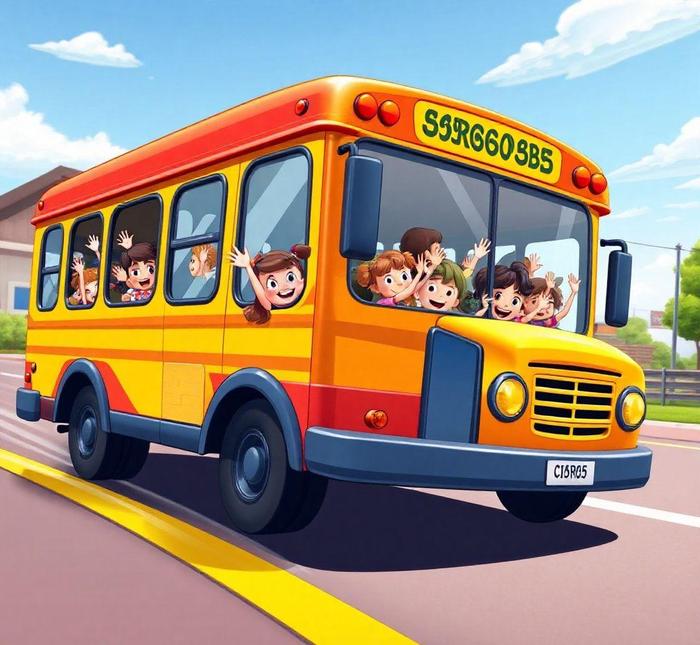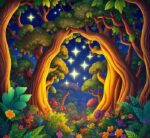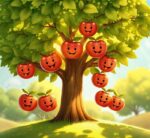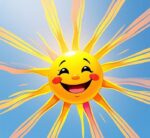- You are here:
- Home »
- words
- » Kindergarten Words That Start With B [LIST]

Kindergarten Words That Start With B [LIST]
When teaching young children to read and write, introducing them to simple and recognizable words is essential for building their vocabulary. Kindergarten is a crucial stage where children begin to develop foundational language skills, and focusing on words that start with the same letter, such as “b”, helps them recognize patterns in language and enhances their phonemic awareness. Words starting with the letter ‘b’ are not only easy for young learners to pronounce, but they also represent a wide variety of objects, animals, and actions that children can relate to in their everyday lives.
A curated list of kindergarten words that start with ‘b’ can be an excellent resource for teachers and parents looking to enrich early literacy lessons. These words often appear in common objects, animals, and activities, making them engaging and memorable for young learners. By practicing with this list, children can strengthen their understanding of the alphabet while expanding their vocabulary in fun and meaningful ways. Whether it’s learning to say “ball”, “bird”, or “book”, the possibilities are endless, and each new word helps young students feel more confident in their language abilities.
Kindergarten Words That Start With B
1. ball
A ball is a round object used for games and sports. It can be thrown, bounced, or kicked, and comes in many sizes and colors. Balls are used in various activities like soccer, basketball, or simple games like catch.
Examples
- The ball bounced across the yard.
- I like to play catch with my ball.
- The red ball is my favorite to kick.
2. bat
A bat is a flying mammal known for its nocturnal habits and use of echolocation. It also refers to a long, flat piece of wood used to hit balls in sports like baseball and cricket.
Examples
- The bat flew out of the cave at night.
- He hit the baseball with a bat.
- Bats use echolocation to find food.
3. bed
A bed is a piece of furniture where people sleep. It typically includes a mattress, sheets, and blankets, and can be found in bedrooms.
Examples
- I sleep in my cozy bed.
- My bed is covered with a soft blanket.
- Make sure to tidy up your bed every morning.
4. book
A book is a collection of written or printed pages, often bound together. Books are used for reading and can contain stories, information, or pictures.
Examples
- I love reading a book before bedtime.
- She is holding a book with colorful pictures.
- The book was full of fun stories.
5. boat
A boat is a watercraft designed to travel across water. Boats come in various sizes and shapes and can be used for travel, fishing, or recreation.
Examples
- We took a boat ride on the lake.
- The boat is floating on the water.
- There are many types of boats, from small canoes to big ships.
6. box
A box is a container with four sides, a top, and a bottom, used to store or carry things. It can be made from cardboard, wood, or plastic.
Examples
- I put my toys in the box.
- She closed the box after packing it.
- The box was full of colorful gifts.
7. baby
A baby is a very young child, typically under one year old. Babies need a lot of care and attention as they grow and learn new skills.
Examples
- The baby smiled at me.
- The baby is learning to crawl.
- She is holding a small baby in her arms.
8. bus
A bus is a large vehicle used for transporting groups of people. Buses are commonly used for public transportation or to take children to school.
Examples
- The bus is taking us to school.
- She rode the bus with her friends.
- The yellow school bus is big and loud.
9. bird
A bird is a small animal that has feathers, wings, and typically can fly. Birds lay eggs and come in many shapes, sizes, and colors.
Examples
- The bird flew high in the sky.
- I saw a blue bird in the tree.
- Birds make nests in the spring.
10. banana
A banana is a long, curved fruit that is yellow when ripe. Bananas are sweet and soft inside and are often eaten as a snack or used in smoothies.
Examples
- I eat a banana for breakfast.
- The banana is yellow when it is ripe.
- She peeled the banana before eating it.
11. bag
A bag is a flexible container used to carry things. It can be made from cloth, plastic, or leather, and is often used to hold personal items like food or clothing.
Examples
- She put her lunch in a bag.
- I carry my books in my school bag.
- The bag is full of toys.
12. brother
A brother is a male sibling, someone who shares at least one parent with you. Brothers often play and spend time together, and they can be older or younger.
Examples
- My brother is playing outside.
- I have one older brother.
- My brother helped me build a tower with blocks.
13. bushel
A bushel is a unit of measurement, often used for fruits, vegetables, or grains. It refers to a specific quantity, often around 8 gallons or 35 liters.
Examples
- She picked a bushel of apples from the tree.
- The farmer sold a bushel of corn at the market.
- A bushel is a large container used to measure crops.
14. bread
Bread is a food made from flour, water, and usually yeast, which is baked into loaves. It is commonly eaten as a staple food across many cultures.
Examples
- I like to eat bread with butter.
- We had fresh bread for breakfast.
- The bread is soft and warm from the oven.
15. bottle
A bottle is a container typically made of glass or plastic, used for holding liquids such as water, juice, or soda.
Examples
- I drink water from a bottle.
- The bottle was filled with juice.
- Please recycle the plastic bottle.
16. bicycle
A bicycle is a two-wheeled vehicle powered by pedaling. It is used for transportation, exercise, or recreation and can be ridden by children and adults alike.
Examples
- I ride my bicycle to the park.
- The bicycle has two wheels and a bell.
- She learned to ride her bicycle without training wheels.
17. blanket
A blanket is a large piece of cloth used to cover oneself for warmth, usually on a bed or couch.
Examples
- I wrapped myself in a warm blanket.
- The baby is sleeping with a soft blanket.
- The blanket is bright and colorful.
18. button
A button is a small, round fastener used to close or secure clothing, or to control a device. Buttons can be pressed to make machines or electronics work.
Examples
- I pressed the button to turn on the light.
- My shirt has three buttons on the front.
- She pressed the button to call the elevator.
19. back
The back is the rear part of something. It can refer to the back of a body, a chair, or a space, and often implies direction or position.
Examples
- She hurt her back while lifting the box.
- I like to sit in the back of the classroom.
- He looked back to see if anyone was following.
20. big
Big refers to something that has a large size, volume, or importance. It is often used to compare things or describe objects that are much larger than others.
Examples
- The elephant is big and gray.
- My house is big and has a garden.
- She has a big smile.
21. block
A block is a solid piece of material, often rectangular or square. Blocks are used in construction or as toys for building structures.
Examples
- She built a castle with wooden blocks.
- The block is made of colorful plastic.
- We played with the blocks all afternoon.
22. butter
Butter is a soft, creamy substance made from churning milk or cream. It is often used in cooking or as a spread on bread.
Examples
- I spread butter on my toast.
- The butter is soft and creamy.
- Mom adds butter to the popcorn.
23. birdhouse
A birdhouse is a small shelter designed for birds to live or nest in. It is typically made of wood and can be placed outside, often in gardens or on trees.
Examples
- The birdhouse is hanging from the tree.
- We built a birdhouse for our garden.
- A birdhouse provides a safe place for birds to nest.
24. bath
A bath is a method of washing the body, usually in a tub filled with water. It is an important part of personal hygiene.
Examples
- I take a bath every evening.
- She likes to splash in the bath.
- The baby is ready for a bath.
25. broom
A broom is a cleaning tool with a long handle and bristles used for sweeping dust and dirt from floors.
Examples
- I use a broom to sweep the floor.
- The broom has a long handle.
- She was sweeping the porch with the broom.
26. bridge
A bridge is a structure built to span a gap, such as a river or road, to allow for travel or passage across it.
Examples
- The car drove over the bridge.
- The bridge connects the two cities.
- We saw a rainbow over the bridge.
27. bucket
A bucket is a container with a handle, often used for carrying liquids, sand, or other materials.
Examples
- I filled the bucket with sand.
- The bucket is heavy because it’s full of water.
- She carried a bucket to the garden.
28. bell
A bell is a hollow, usually metal object that makes a ringing sound when struck. Bells are often used in schools, churches, and for signaling events.
Examples
- I heard the school bell ring.
- The bell is ringing to signal the start of class.
- She wore a necklace with a tiny bell on it.
29. birthday
A birthday is the anniversary of the day a person was born. It is often celebrated with parties, gifts, and special activities.
Examples
- We celebrated my birthday with cake and balloons.
- His birthday is in October.
- She had a big birthday party with all her friends.
30. basket
A basket is a container made from woven materials like straw or plastic, used for carrying or holding items such as fruit, toys, or laundry.
Examples
- She placed the apples in the basket.
- The basket is made of woven straw.
- I have a basket of toys in my room.
31. branch
A branch is a part of a tree that grows out from the main trunk. It supports leaves, flowers, or fruit and is important for the tree’s structure.
Examples
- The bird sat on the tree branch.
- The branch broke during the storm.
- I climbed the tree and reached a high branch.
32. broccoli
Broccoli is a green vegetable with a tree-like structure, made up of a thick stalk and small flower buds. It is rich in vitamins and fiber.
Examples
- I ate broccoli with my dinner.
- Broccoli is green and good for you.
- She likes to dip her broccoli in ranch dressing.
33. bark
Bark is the protective outer layer of a tree’s trunk and branches. It can also refer to the sound a dog makes.
Examples
- The dog started to bark at the mailman.
- The tree’s bark was rough to touch.
- The bark on the tree protects it from the weather.
34. bunny
A bunny is a small, soft, furry animal known for its long ears and short tail. Bunnies are also called rabbits and are often associated with springtime.
Examples
- The bunny hopped across the field.
- I saw a cute bunny in the garden.
- The Easter bunny brings eggs.
35. bake
To bake is to cook food, especially bread, cakes, or cookies, in an oven. It involves using heat to make food rise and become firm or golden.
Examples
- We will bake cookies for dessert.
- She loves to bake cakes with her grandmother.
- They decided to bake a loaf of bread.
36. brick
A brick is a small, rectangular block made of clay or stone, used in building structures like houses, walls, and paths.
Examples
- The house is made of red bricks.
- He built a wall with bricks.
- The brick road was smooth to walk on.
37. badge
A badge is a small, often decorative, item worn to show rank, achievement, or membership in a group. Badges are commonly worn by police, scouts, or employees.
Examples
- He wore a badge to show he was a helper.
- She received a badge for completing the challenge.
- The police officer wore a shiny badge.
Historical Context

When we delve into the historical context of kindergarten words starting with the letter "B," we’re stepping into a rich tapestry of language development, educational reform, and cultural shifts. The word "kindergarten" itself, derived from German, means "children’s garden," a fitting metaphor for the nurturing environment in which young learners are expected to grow and flourish. The concept of kindergarten, first popularized by Friedrich Froebel in the 19th century, was revolutionary in its time. Froebel believed that early childhood education should focus not just on academic learning, but on creativity, socialization, and emotional growth. His approach laid the groundwork for much of the modern educational system we recognize today, and this philosophy influenced the kinds of words children would encounter in early education.
Words beginning with "B" were not chosen by accident in early childhood education settings. For centuries, educators have understood that young children learn through the process of association—by linking sounds, shapes, and concepts together. Words like "ball," "bird," and "book" are not just simple vocabulary; they represent foundational elements in a child’s cognitive and social development. These words often describe things children encounter in their everyday lives, objects and concepts that are easily visualized, manipulated, and interacted with, thus creating strong mental associations that help young minds build meaning.
In the historical context of kindergarten education, language was always seen as a tool to connect children to their surroundings, to nature, and to each other. Words beginning with "B" often represent these fundamental connections: objects, actions, and concepts that are vital in helping young children navigate the world around them. As early educational methods evolved over the 19th and 20th centuries, these words became staples in the lexicon of childhood education, especially in the context of early literacy programs, where phonetics and word recognition formed the bedrock of language acquisition.
Word Origins And Etymology
Exploring the etymology of kindergarten words starting with "B" reveals how language evolves over time, incorporating influences from many different cultures and historical periods. Each word carries with it a rich backstory that reflects its journey from ancient roots to its modern-day usage in the classroom.
Take the word "ball," for example. The word has origins that trace back to Old French "balle" and further to the Latin "balla," meaning "a round object." Early forms of the word referred to any spherical object used for play, a concept that spans cultures and centuries. Children today still use balls as a central part of play, reinforcing the word’s universality in early childhood development. This continuity underscores how language grows from universal human experiences, such as the simple act of play.
Similarly, the word "bird" comes from the Old English "brid," which originally meant "young bird" or "nestling." Over time, the meaning expanded to refer to all types of flying creatures within the avian species. In a kindergarten setting, the word "bird" holds great significance—children observe birds in nature, draw pictures of them, and often sing songs about them. The evolution of the word reflects humanity’s long-standing fascination with nature and the natural world, a theme that is central to the curriculum of early childhood education.
The word "book" traces its roots to the Old English "boc," which is believed to have derived from the Proto-Germanic "*bok" meaning "beech tree," since ancient people used beech wood to write upon. Over time, "book" came to represent any collection of written or printed works. In the context of kindergarten education, "book" is not just a physical object—it is a gateway to imagination, learning, and exploration. The word itself carries the weight of centuries of human intellectual endeavor and discovery, making it a cornerstone of early literacy.
As we can see, each of these kindergarten words has a deep historical and linguistic journey that mirrors the development of human culture, communication, and education. Their evolution provides insight into how language adapts to meet the needs of young learners and helps shape the way children understand and engage with the world around them.
Common Misconceptions
While many kindergarten words that start with the letter "B" are simple and easy to understand, there are some common misconceptions that can cause confusion for both educators and young learners. One such misconception is that the simplicity of these words means they are always easy to grasp. However, early vocabulary acquisition is far from a straightforward process, and even seemingly simple words can present challenges for young children.
For instance, the word "bat" can be confusing because it has multiple meanings. A child might associate "bat" with the animal, but "bat" is also a piece of sports equipment used in games like baseball. This dual meaning can lead to misunderstandings if the context isn’t clearly established. Teaching young learners to differentiate between these meanings is a critical part of vocabulary development and comprehension.
Another common misconception involves the word "box." While it may seem like a straightforward term, young children may struggle to fully grasp the concept of a "box" as a container. In a world filled with objects that may look similar to a box but serve different purposes, such as baskets, crates, or bins, children may find it difficult to understand the functional role of a box. This can be further complicated by the fact that boxes come in many shapes and sizes, from square cardboard boxes to round storage containers, making the concept more abstract than expected.
Additionally, words like "brother" or "baby" may seem simple, but they can be laden with social and emotional complexities for children. A "brother" is not just a person but represents a familial role, and understanding this relationship may take time, especially in diverse family structures. The same goes for the word "baby," which can refer to a sibling, a friend, or even an animal. These layers of meaning require careful guidance from educators to ensure children develop a clear and accurate understanding of the terms.
Finally, the word "big" can be deceptively tricky. Young children often think in very concrete terms—something is either big or small, but they may struggle with the gradation of size. "Big" can be subjective, depending on context, and children must learn to interpret it relative to other objects. For instance, a "big" dog might seem large compared to a cat, but in comparison to an elephant, the dog would be small. Educators must take care to introduce comparative language at an early age to help children develop more nuanced understandings of size and scale.
Conclusion
The study of kindergarten words starting with the letter "B" offers a fascinating glimpse into the intersections of language, culture, and early childhood education. These words, while seemingly simple, are deeply rooted in history and carry with them centuries of human experience. Whether through the playful "ball" or the imaginative "book," these words are the building blocks of literacy and cognitive development, serving as the first steps in a child’s educational journey.
Understanding the origins and etymology of these words helps highlight how language evolves over time, adapting to the needs of each generation. At the same time, acknowledging the common misconceptions associated with these words reminds us that early learning is a nuanced process, shaped by context, experience, and the gradual acquisition of complex concepts. As children grow, so too does their understanding of the world and their place within it, with words like "bird," "brother," and "box" acting as key milestones in their linguistic and cognitive development.
In the end, the words children learn in kindergarten are not just vocabulary—they are tools for exploration, communication, and connection. They provide a lens through which children see and make sense of their world, forming the foundation for all future learning. The journey of learning these words is as much about the process of discovery as it is about the words themselves.








